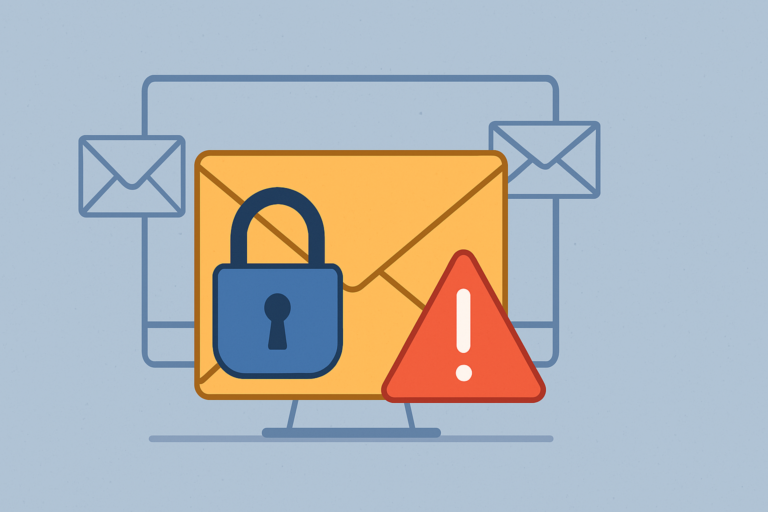Every day, people give away something incredibly valuable without thinking twice: their email address.
That might sound dramatic, but it’s true. Your email isn’t just a way to receive messages — it’s a key that unlocks access to your online identity. It connects your shopping habits, social profiles, subscriptions, logins, and often, even sensitive personal data.
Yet we’re constantly handing it out to websites, companies, and platforms that don’t really need it — or worse, shouldn’t have it in the first place.
In this article, we’ll look at five common situations where giving out your real email is more harmful than helpful — and why using a disposable address is a smarter, safer choice.
1. Signing Up for Free Trials
We’ve all been there: you want to try a new tool, streaming service, or productivity app, and all that’s required is a quick sign-up — no payment needed, just an email address.
What you don’t see is the beginning of a long email funnel. Behind that form is often a complex marketing system ready to tag, track, and follow up. You’ll likely receive a welcome message, a sequence of “onboarding tips,” discount offers, and eventually, the desperate “we miss you” emails. Even after unsubscribing, some services continue to send messages or share your email with third-party platforms.
Free trials are rarely “free” when it comes to your inbox. If you don’t plan to stick with the product, there’s no reason to involve your real email address. A temporary one works just as well — and gives you a clean exit.
2. Entering Giveaways or Contests
Online giveaways are often more about collecting email addresses than giving out prizes. Whether it’s a gadget, subscription, or “limited access” reward, the real value for the organizers lies in building their mailing list.
Once you enter, your inbox may be bombarded with unrelated promotions, or worse, your address may be added to marketing lists you never agreed to. Some companies even share or sell their email databases to advertisers and affiliates.
The problem is not just the unwanted emails — it’s the erosion of trust. A temporary address lets you engage with these kinds of promotions without the long-term baggage.
According to the Federal Trade Commission (FTC), even legitimate-looking promotions can be fronts for phishing attempts. Keeping your main inbox out of reach is just good sense.
3. Downloading Free Resources
Many websites offer whitepapers, templates, or reports in exchange for an email address. This is a popular tactic in marketing, especially in business-related fields. You fill out a form, confirm your email, and receive the file.
What follows is usually a steady stream of emails — sometimes even personalized outreach from sales reps asking if you “have a few minutes to talk.”
This is acceptable if you’re genuinely interested in the product or service behind the content. But often, you’re just there for the download. When that’s the case, using a temporary email prevents unnecessary follow-up and keeps your inbox clean.
4. Trying Out Unknown Tools or Services
It’s easy to get excited about a new app or digital tool. Whether it’s something you find on a product discovery site, in a newsletter, or via a recommendation, it’s tempting to give it a try right away.
But lesser-known platforms often come with unclear privacy policies or security practices. They may not properly encrypt or protect your data, and many fail to handle unsubscribe requests correctly. Worse, if they’re acquired or shut down, your information might end up in the hands of someone you didn’t intend to trust.
Unless you’re confident in a platform’s reputation and long-term viability, there’s no need to give out your real email during the first contact. A disposable address offers a frictionless way to explore without putting your data at risk.
5. One-Time Interactions
Sometimes you just need to fill out a form, send a message, or register for access — once. It could be to contact a seller, download software, or get past a content gate. These are often quick, forgettable moments in your online routine.
Unfortunately, companies often treat every submitted email as a new opportunity for ongoing engagement. Even single-use forms can trigger months of follow-up, surveys, product launches, and seasonal promotions.
If the interaction doesn’t require a long-term relationship, there’s no benefit in using a permanent inbox. A temporary email helps you maintain boundaries and reduces inbox clutter.
Final Thoughts: Less Exposure, Less Stress
Your email address isn’t just a piece of contact info — it’s a part of your digital identity. The more places you share it, the more vulnerable you become to spam, tracking, unwanted outreach, and privacy breaches.
By being more selective about when and where you use your real address, you protect your digital space — and your peace of mind.
Tools like Trashlify make it easy to stay in control. With just a few clicks, you can generate a polite, AI-powered message and send it from a clean, disposable address. You get what you need — without giving away more than necessary.
The next time a website asks for your email, ask yourself:
Do they really need it?
If not, you know what to do.

 EN
EN DE
DE FR
FR ES
ES PT
PT